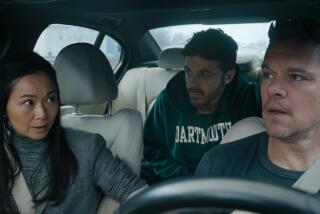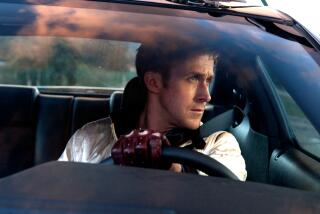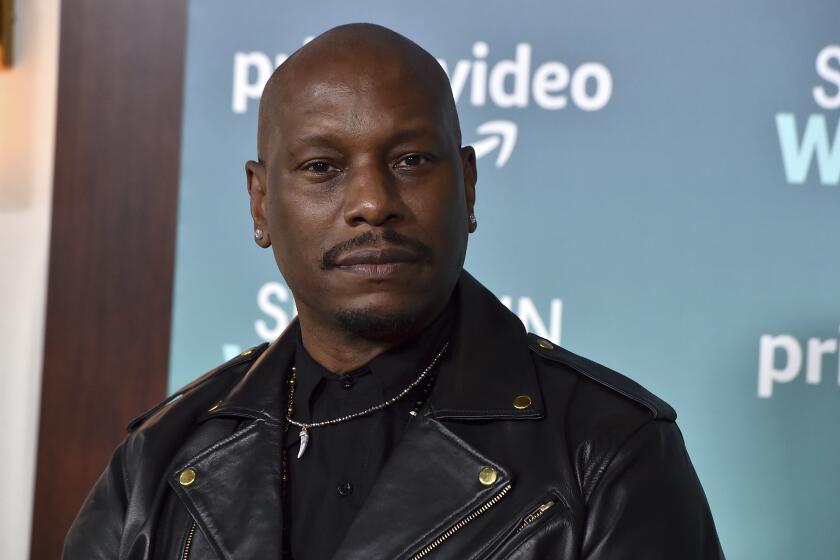Trust factor keeps film teams together
Here’s how director Peter Berg (“Lone Survivor”) and art director Tom Duffield bonded professionally: They got kidnapped.
The duo, who would go on to work together on three films (including the upcoming “Lone Survivor”), were scouting locations in the Brazilian rain forest for Berg’s 2003 film, “The Rundown,” and were held for several hours by three armed men who were trying to figure out how to ransom them. “Going through an experience like that and coming out the other side, a real relationship of trust is formed,” says Berg. “If a guy has your back when you’re kidnapped, you know he’ll be there for you on a film set.”
FOR THE RECORD:
“Lone Survivor”: In the Dec. 12 Envelope section, an article about filmmaking partnerships referred to Tom Duffield as an art director on Peter Berg’s 2003 film “The Rundown.” Duffield was the production designer for the picture, as well for the director’s upcoming film “Lone Survivor.”
Few directors bond with their crew in life-or-death situations, but Berg’s point is sound: Movie making is so fraught with potential pitfalls that the trust relationship between director, actors and crew can make or break a production. And Berg is not alone; many directors reconnect with cast and crew for exactly that same reason: The known can be trusted, and what is trusted will help the project.
“The process is so involved and specific and subjective that the more familiarity you have with people you work with, the more you’re able to create and be specific with what you want,” says Ben Stiller, director and star of “The Secret Life of Walter Mitty,” who has hired “Mitty” composer Theodore Shapiro, production designer Jeff Mann and editor Greg Hayden on some of his other films.
J.J. Abrams also brings a regular crew on his projects such as “Star Trek”; in the case of editor Maryann Brandon, they have a relationship that stretches back to his TV series “Alias.” That kind of connection allows her to brainstorm or spitball in a place of safety, she says.
“There are a lot of bad ideas I’ll try with J.J.,” she says. “Things that might ultimately lead to a great idea. You need someone to let you travel down that road, and sometimes make mistakes, so you can end up with something you didn’t realize would happen.”
TV series “Boardwalk Empire” was the initial connection between Martin Scorsese (the upcoming “The Wolf of Wall Street”) and Terence Winter, who wrote the screenplay, and Winter says their shared background helped forge the working bond they share.
TIMELINE: The Academy Awards through the years
“It’s like we’ve done 48 movies together,” says Winter, who says he “absolutely” can hear Scorsese’s voice in his head while working. “There’s something about growing up in New York City that informs your worldview, sensibility and sense of humor, and it makes it easy to understand each other.”
One benefit of this mutual comprehension is a shorthand that can emerge between a director and his cast and crew. Ellen Chenoweth has cast many of Joel and Ethan Coens’ films (including the just released “Inside Llewyn Davis”) and says it’s a time saver. “You know who they’re talking about if they say, ‘Remember that guy we almost cast?’ It’s not just about saving time but helps you go to a place that makes for an easier starting point.”
“You begin to understand when people are uniquely strong and how to calibrate your understanding of their perspective,” says “Rush” director Ron Howard, who has used composer Hans Zimmer on his last five films. “You have to have collaborators who share your ambition and have creative range and an excitement for meeting those challenges.”
Woody Allen’s (“Blue Jasmine”) sister Letty Aronson has produced his films since 1994, and she says she’s there to support whatever her brother may want. “He feels completely safe telling me things, trying things on me — and the fact that we’re related makes it easier for me to say, ‘That’s good’ or ‘Not good.’”
VIDEO: Highlights from the Envelope Screening Series
Risks seem to be few when it comes to surrounding yourself with familiar faces. Berg insists that because his crew is comfortable with him, they don’t just tell him what he wants to hear. “The problem with being ‘yes-ed’ to death is when you work with people who think their job security is vulnerable, they say what you want to hear,” he says. “These are all pros who can get jobs with other people, and they’re very quick to tell me if I’m making a misstep.”
But “ease” doesn’t mean “easy,” says Bradley Cooper, who returned to David O. Russell’s set with “American Hustle” after earning an Oscar nomination for the director’s “Silver Linings Playbook.” “Challenge is fun,” he says. “Difficult doesn’t equate to lack of enjoyment. Difficult is actually a challenge, which means it was utterly exhilarating.”
In the end, there’s a strong belief that the tight relationships of trust between crew, actors and directors actually make for a stronger final cut.
“Ultimately, it only helps the project,” says Winter. “Everyone’s shooting for the same goal. The way a film is made, you’re always better off with someone you’re in sync with — and that’s part of the fun. A happy collaboration makes a better project.”
More to Read
Only good movies
Get the Indie Focus newsletter, Mark Olsen's weekly guide to the world of cinema.
You may occasionally receive promotional content from the Los Angeles Times.









